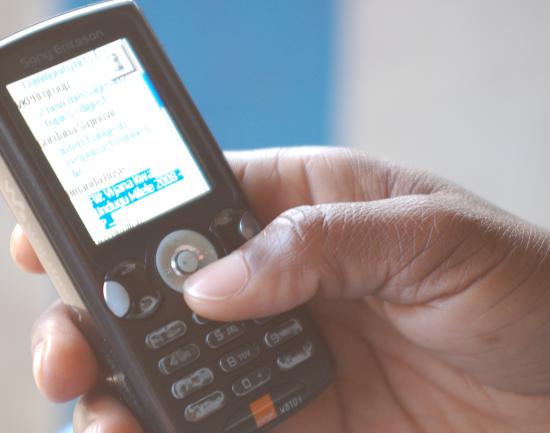Can mobile phone–based information improve the lives of farmers in the developing world? And can these farmers use their phones to share knowledge and skills with other farmers?
A major new research project by School of Information assistant professor Tapan Parikh aims to answer these questions and others; the National Science Foundation this week announced a half-million dollar grant to fund Parikh’s research for the next five years.
Around the world, mobile phones are revolutionizing how people access information. Decreasing cost and improved coverage have brought this technology to literally billions of poor, rural people. Mobile phones have the potential to provide farmers vital information about health, agriculture, and government services.
Parikh has devoted his career to this opportunity. “I became interested in this area through my direct experiences working with non-profit and community-based organizations in rural India,” explained Parikh. “It was apparent to me that improved access to information could provide immediate dividends for many development activities, anywhere from the household to the national scale.”
Thus far, however, mobile phones have been used primarily for one-to-one communication rather than online information — especially by poor and novice phone users. And illiteracy (or marginal literacy) limits information access for nearly a billion people worldwide.
“We need a re-contextualized approach to information systems design and implementation that takes these constraints into account,” explains Parikh.
In the case of low-literacy users, Parikh suspects that one solution is an interactive voice-based system. He has already worked to develop and deploy such a system, Avaaj Otalo (literally, “voice stoop”), a voice-based discussion board for small farmers in Gujarat, India. Farmers were enthusiastic about Avaaj Otalo during its seven-month pilot test, and the system received hundereds of calls per week.
During the pilot test, 75 percent of answers were provided by other farmers, rather than by “experts,” and the farmers began developing a sense of community. Parikh believes that this is the best approach for future development efforts. “Often the best sources of agricultural information are other farmers working in a similar environment,” he says. “We need to design tools to help farmers take advantage of the knowledge and expertise that is already there.”
However, a number of questions and challenges still remain. The new five-year project will help answer some of those questions.
First, Parikh will explore techniques for making voice-based interfaces more usable for low-literacy users. “Designing accessible user interfaces for low-literacy users is an open question in human-computer interaction,” he explains. For instance, “previous research shows that less educated populations have difficulty with categorical groupings.”
He will also investigate how information systems help rural farmers assess the credibility of the information. “Our initial findings indicate that farmers trust information from authorities more than from peers.” For these communities to move toward more peer-based information, the interface will need to help farmers determine which information sources are the most reliable.
Finally, Parikh will partner with a development economist to conduct a randomized controlled trial of the economic impact of a peer-based information system. “Randomized controlled trials are already widely used for testing other important interventions — for example clinical trials for drugs or randomized evaluations for development projects,” he points out. “Why shouldn’t computing interventions be subject to the same rigor?”
“This study will attempt to determine the net economic impact of access to the system, in terms of agricultural productivity, income, consumption, and welfare (for example, child nutrition and school attendance). We can also look at more direct indicators, such as whether the treated farmers dealt with pests more effectively.”
Parikh is excited by the possibilities for this new five-year project. He looks forward to integrating his reasearch with his teaching, particularly his course on user interface design and development. He is eager to study previously unsolved problems in the field of human-computer interaction. And he maintains hope that his work can really help people in need. “Making information more accessible to marginalized groups holds tremendous potential for benefiting society.”











